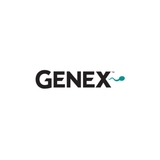
3 minute read
Banks Don’t Leave Their Vaults Unprotected
by GENEX
You Shouldn’t Either.
As a dairy producer you make investments in your business all the time. From picking the best genetics, providing top quality nutrition and excellent cow care, you understand the importance of good investments to drive profit. Equally important as the investment choices you make are the choices you make to protect them.

By choosing to protect your investments, you protect your bottom line
Added costs from ill-maintained equipment, poor feed and higher incidences of health challenges eat away at the profit you work so hard to earn. While GENEX can’t do much to help you with a broken tractor, we can help you with the investments you make in your mastitis prevention program.
The profit killer we all know: mastitis
Protecting your cows after lactation is crucial, as 50-60% of all new mastitis infections occur during the dry period and, on average, each new case of mastitis will cost your bottom line between $117 and $444.1
Where does the problem lie? Around seven days after dry off, 50% of quarters fail to produce an adequate keratin plug. Without this natural barrier to protect against environmental bacteria entering the udder, your cow is left unprotected. By 42 to 50 days after dry off, 10-23% of quarters still fail to form a keratin plug.1
The seen and unseen danger Whether you know it or not, mastitis may be robbing you of profit.
Rather than gaining profits, you lose money with mastitis. That loss comes in a variety ways: 31% milk production losses; 24% veterinarian and drugs; 18% discarded milk; 4% excess labor demand; and 23% premature culling.
Even if you can't see the symptoms of mastitis, your investments could still be in danger. Subclinical mastitis can cost you up to $110 per cow annually.3 Subclinical mastitis cannot be detected by just looking at the milk, but, can be noted by a higher somatic cell count and can usually be revealed through a diagnostic sample. Identifying subclinical mastitis is crucial, as the greatest economic losses are attributed to high bulk tank somatic cell counts resulting in loss of quality premiums and overall lower milk production.
Shield your investments from mastitis
If you are investing in an intramammary dry cow therapy at dry off, don’t leave your investment unprotected! Studies have shown that using an intramammary dry cow therapy along with an internal teat sealant can reduce new dry cow infections by 25%.4
UdderLife ™ OptiShield ™ teat sealant can help protect your cows as they enter the dry period. With minimal air in the tube, a partial insertion tip and a syringe that’s easy to push, it’s an easy solution to keep new bacteria out your cow’s udders and away from your investments.
Shield your bottom line. Contact your GENEX representative today about UdderLife™ OptiShield™ teat sealant.
References
1 Godden, S. et al. (2003). Effectiveness of an Internal Teat Seal in the Prevention of New Intramammary Infections During the Dry and Early-Lactation Periods in Dairy Cows when used with a Dry Cow Intramammary Antibiotic. Journal of Dairy Science, 86(12), 3899–3911.
2 How much does mastitis cost dairy producers annually? (n.d.). The Cattle Site. Retrieved April 14, 2020.
3 Ruegg, P. (2005). Premiums, Production and Pails of Discarded Milk. How Much Money Does Mastitis Cost You? UW Milk Quality Milk Money. University of Wisconsin, Madison.
4 Rabiee, A.R. and Lean, I.J. (2013). The effect of internal teat sealant products (Teatseal and Orbeseal) on intramammary infection, clinical mastitis, and somatic cell counts in lactating dairy cows: A meta-analysis. Journal of Dairy Science, 96(11), 6915–6931.

Shield your investment. Ask your GENEX rep for UdderLife™ OptiShield ™teat sealant.










